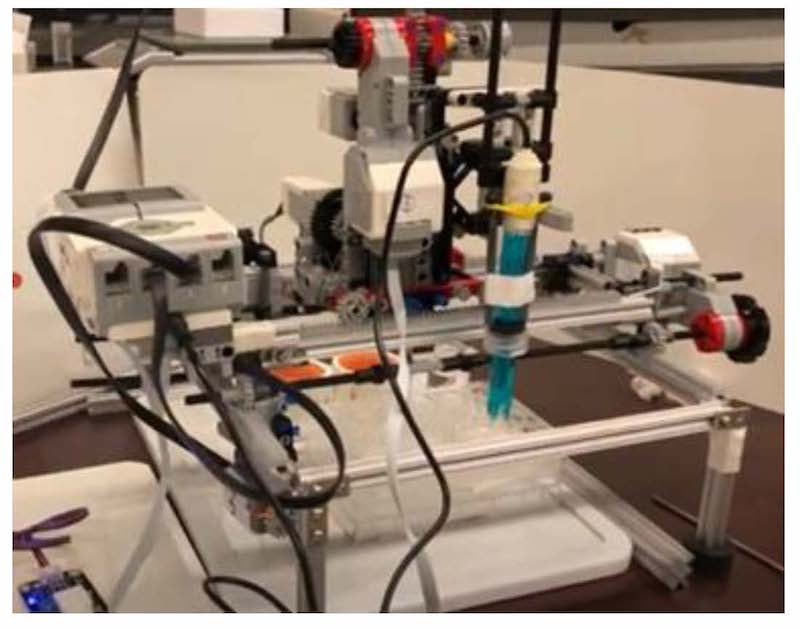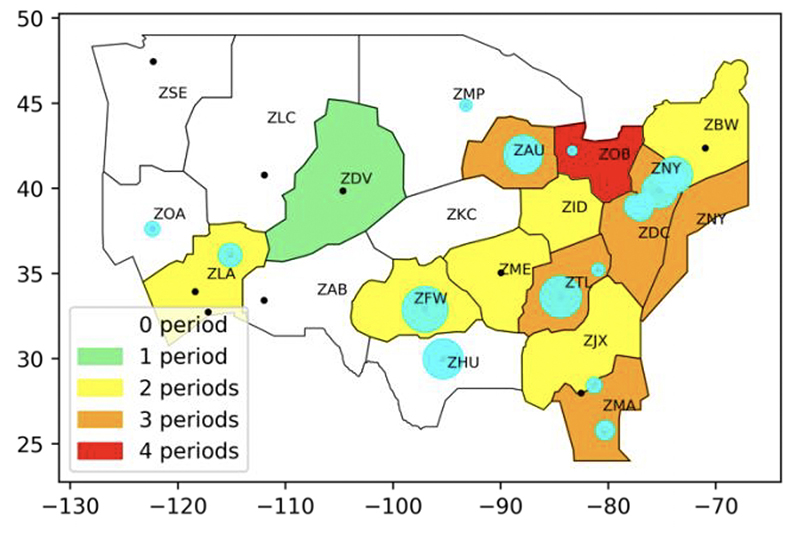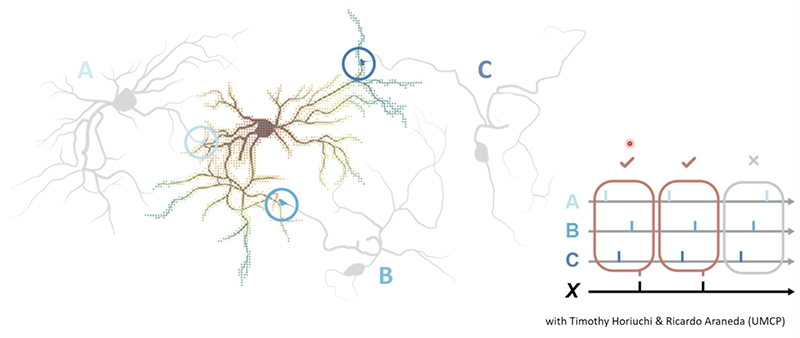News Story
New Tool Predicts Rogue Waves Up to Five Minutes in Advance

Balakumar Balachandran, Distinguished University Professor and Minta Martin Professor, Department of Mechanical Engineering, University of Maryland, College Park, MD.
A new tool developed by researchers in the University of Maryland’s (UMD) Department of Mechanical Engineering could help provide ships and offshore platforms with early warning of unusually large and unpredictable waves, known as rogue waves or freak waves.
Postdoctoral researcher Thomas Breunung and Distinguished University Professor Balakumar Balachandran say their tool can provide up to five minutes of warning, thus giving workers on offshore oil rigs and installations valuable time in which to seek shelter, perform emergency shutdowns, or evacuate crew members. Crews on cargo ships and crews and passengers on passenger ships could use this advance time to take safety measures as well. Details are presented in a study published on Thursday (July 18) by Scientific Reports.

Thomas Breunung, Postdoctoral Researcher, Department of Mechanical Engineering, University of Maryland, College Park, MD.
Balachandran, who chaired the mechanical engineering department from 2011 to 2023, is also Minta Martin Professor at UMD and a faculty member in the university’s Applied Mathematics and Scientific Computation program. Breunung, who is currently a postdoctoral researcher working with Balachandran, will be taking up a tenure-track faculty position in mechanical engineering at the University of Wisconsin, Madison in January 2025.
To engineer the tool, the two researchers trained a neural network to distinguish ocean waves that will be followed by a rogue wave from those that will not. To facilitate the network training, they utilized a data set consisting of 14 million 30 minute-long samples of sea surface elevation measurements from 172 buoys located near the shores of the continental United States and the Pacific Islands.
This data set contained thousands of rogue waves, which Breunung and Balachandran then processed and compiled for training the neural networks. After the training, they used their tool to predict the emergence of rogue waves.
The UMD researchers found their tool was able to correctly predict the emergence of 75% of rogue waves one minute into the future and 73% of rogue waves five minutes into the future. In addition, Breunung and Balachandran demonstrated that the tool could be used to predict the emergence of rogue waves near two buoys at widely different depths not included within the data sets used for the network training. This suggests that the trained neural network may have universal predictive capabilities and could be used to predict rogue waves at new locations.
According to the researchers, the accuracy and advance warning time of their tool’s forecasts could be further improved by incorporating physical quantities such as water depths, wind speeds, and buoy locations. Future research could also enable the heights of upcoming rogue waves or the times at which they may emerge to be predicted.
Said Breunung: "While the success rates of our approach are encouraging, the utilized neural network allows us to draw only limited conclusions about the fundamental physics of rogue wave events. As researchers, we are now more motivated than ever to utilize similar approaches to gain a deeper understanding of rogue waves."
At UMD, Balachandran has been using data-driven approaches to study complex dynamics for more than a decade. The tool, he said, is “an example of the tangible ways in which machine learning can support applications that enhance safety and well-being."
"Rogue waves are one type of extreme event," he said. "Our data-driven approach could be useful for understanding and predicting other extreme events associated with for example, climate change and combustion process."
In the News
"How rogue waves strike and leave ships all at sea," Times of India, Sept. 1, 2025
"You might have missed: rogue waves; sea sawdust; active fabric; and groundcherries," Cosmos, July 22, 2024
"Engineering: Tool predicts rogue waves up to 5 minutes in advance," EurekAlert, July 18, 2024
"Rätsel gelöst: Monsterwellen lassen sich doch vorhersagen," GEO, July 27, 2024
"Rogue Waves Are Real and Can Be Predicted, Study Says," Haaretz, July 18, 2024
"What are ‘rogue waves’ and how can AI help predict them?" Indian Express, July 22, 2024
"Scientists Found a Way to Predict Rogue Waves Five Minutes Before They Happen," Inertia, July 18, 2024
"Rogue waves can strike without warning. These scientists found a way to predict them," NPR, July 18, 2024
"Rogue wave prediction system gives ships a five-minute warning," New Atlas, July 19, 2022
"Chaotic, terrifying rogue waves haunt the ocean. Scientists have a plan to help," USA Today, July 18, 2024
"This AI can predict ship-sinking 'freak' waves minutes in advance," Science News, July 18. 2024
"Rogue Waves: Predicting the Unpredictable With Advanced Neural Networks," SciTechDaily, July 18, 2024
"Watch Tornado Science at the Movies and the Perseids in the Sky," Scientific American, July 22, 2024
"Potentially life-saving AI breakthrough to detect rogue waves,"TradeWinds," July 18, 2024
"Scientists Can Now Predict Rogue Waves Five Minutes Before They Happen," Yahoo, July 19, 2024
"Five minutes to save lives: AI tool predicts killer sea waves in advance," Interesting Engineering, July 18. 2024
"New Study Leverages AI to Predict Killer Waves With Significant Accuracy," Tech Times, July 19, 2024
"AI predicts tidal waves 5 minutes before they occur… Accuracy over 70%," Yonhap News Agency,
Coverage by International Organizations
"New tool predicts rogue waves up to five minutes in advance," PreventionWeb (UN Office for Disaster Risk Reduction), July 19, 2024
Published July 18, 2024









